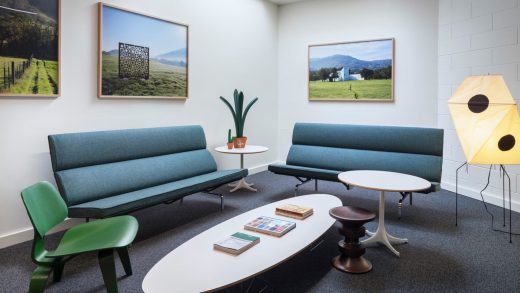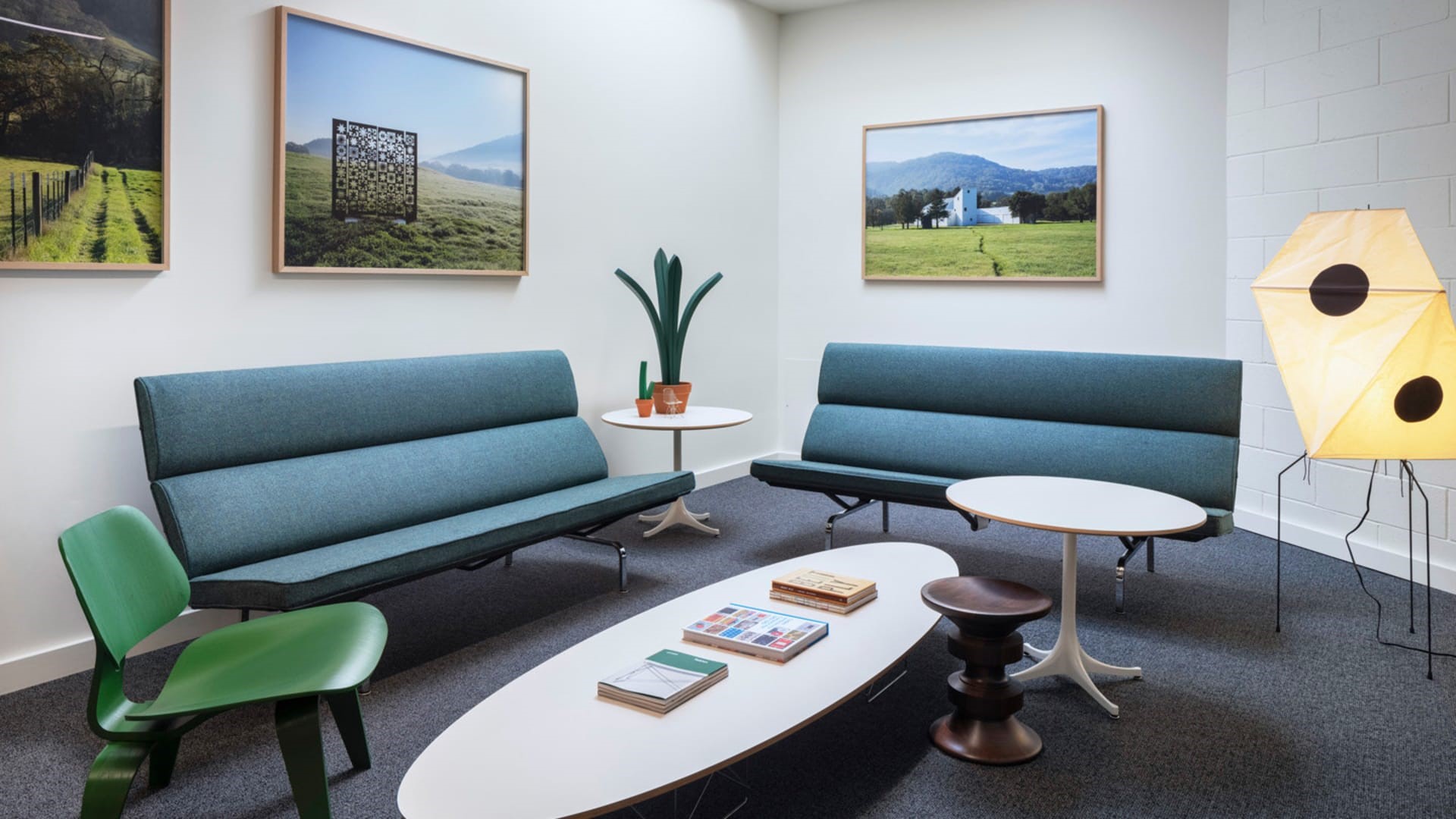Inside the unexpected building where the legacy of Charles and Ray Eames lives on
July 11, 2024
Inside the unexpected building where the legacy of Charles and Ray Eames lives on
This bland medical device factory was transformed into an archive for the Eames’ iconic design work.
BY Nate Berg
The longtime Venice, California, studio of the interdisciplinary 20th century designers, Ray and Charles Eames, was a deceptive piece of ho-hum commercial architecture. It belied the world-changing design taking place inside. The Eameses helped shape 20th century design, culture, and innovation—from more comfortable molded plywood leg splits (for injured WWII soldiers) to imagination-sparking children’s toys and games to their sleek, streamlined furniture that continues to be produced by Herman Miller.
The building that housed their studio was, itself, far from revolutionary. It was originally built as a bus garage.
“On the outside, it didn’t look like the 20th century’s most famous and forward-looking designers inhabited it,” says Sam Grawe, chief brand and marketing officer at the Eames Institute of Infinite Curiosity, a two-year-old organization in charge of preserving and spinning forward the Eames Archives and legacy.
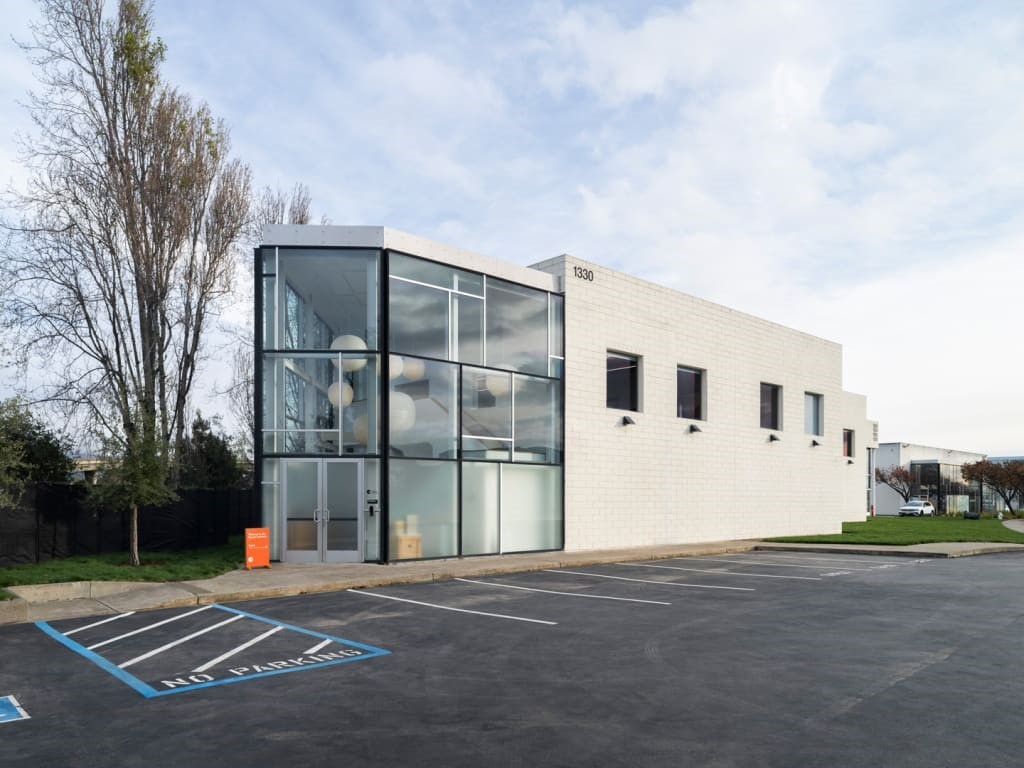
It’s fitting then that this institute has recently opened its offices and archives in an equally nondescript location—a blink-and-you-miss-it concrete block building on the side of a freeway. Located in Richmond, California, the institute’s building is far from a design standout, but hiding inside are tens of thousands of pieces of design work and ephemera from the Eameses, and offices where the couple’s design legacy is being preserved and expanded.
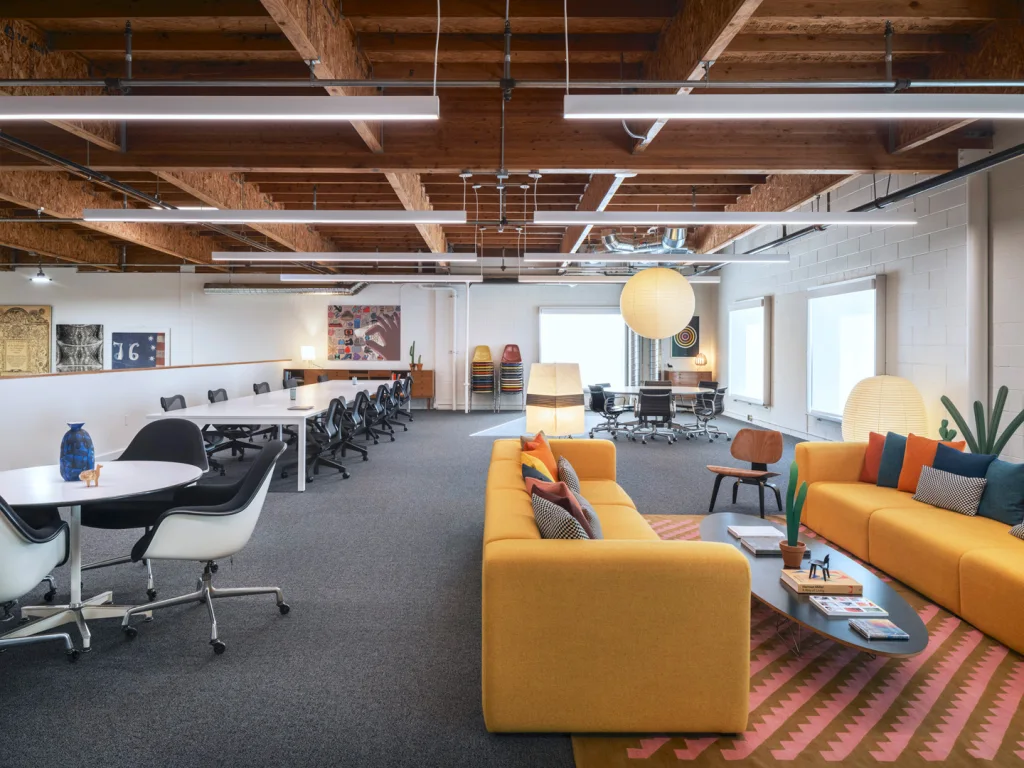
But this was not just a random real estate transaction. The buildings became known to the institute through William Stout, proprietor of a renowned architectural bookstore in San Francisco. Stout retired in 2022, and the Eames Institute acquired his shop and extensive collection—adding to the institute’s already robust inventory. Stout’s library of architecture books was stored in a commercial building in Richmond, on the other side of the bay, next door to a medical device manufacturer. Coincidentally, this manufacturer was planning to end its lease, so the Eames Institute took over the leases for both spaces, kept the books where they were, and moved itself into the space next door.
“It was really a confluence of things that led us there, but it worked out to be pretty ideal,” Grawe says.
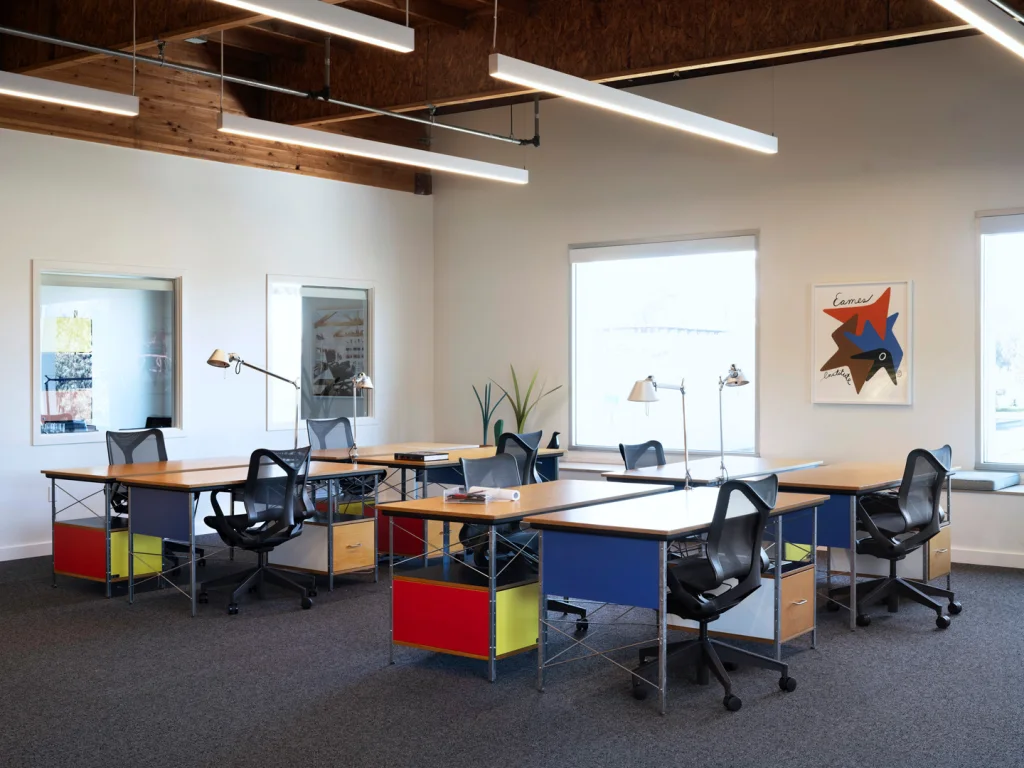
The former medical-device manufacturing building is now home to the Eames Archive: of roughly 40,000 objects on the first floor and the institute’s offices on the second. Appropriately, the offices are bedecked with Eames-designed furniture and objects, some of which are pulled from the institute’s collection while others come directly from Herman Miller as recent productions.
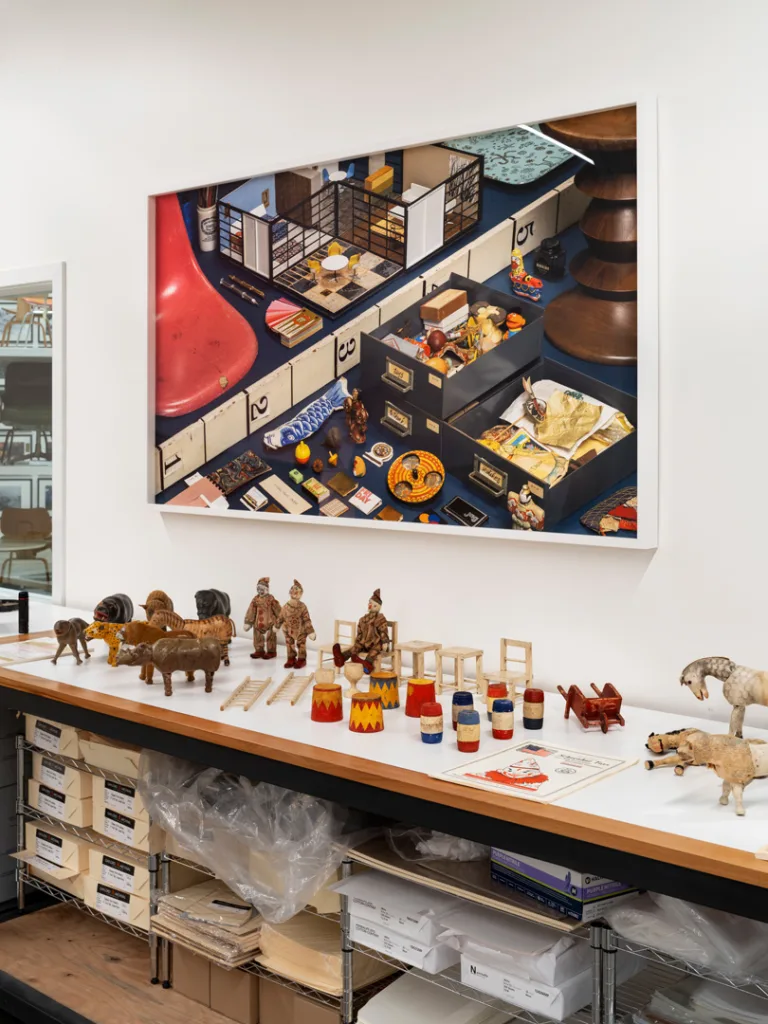
Turning this building into something worthy of the Eames design oeuvre required some renovation, drawing on expertise from the institute’s team. “Despite being in a very interesting shell with very thoughtfully placed window openings and arrival sequences, it had drop ceilings and brass trimmed light fixtures and was very much divided up into dark little office spaces,” says Sydnor Elkins, senior director of design and construction. She led the process of tearing out walls and creating more flexible spaces for workstations, collaboration, and the active interpretation and reinterpretation of the Eames collection.
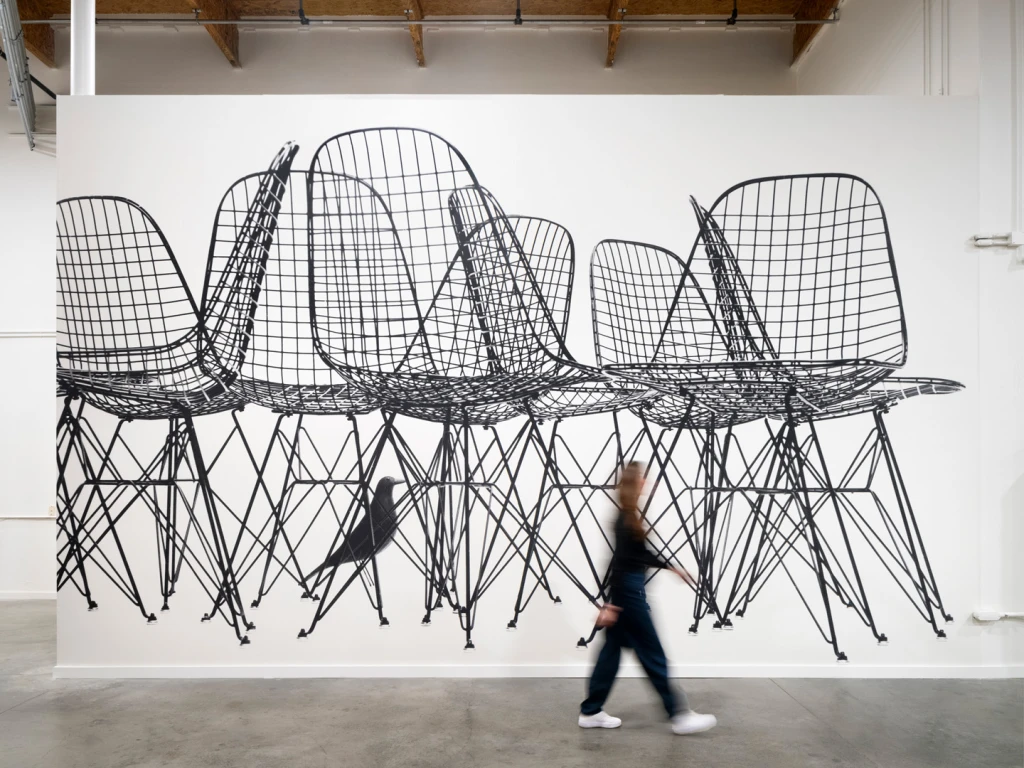
The Eames Archives, which were previously held in storage facilities scattered around the Bay Area and across the country, are now concentrated on the first floor, on display for small guided tours but also with easy access for the collections team now working on site.
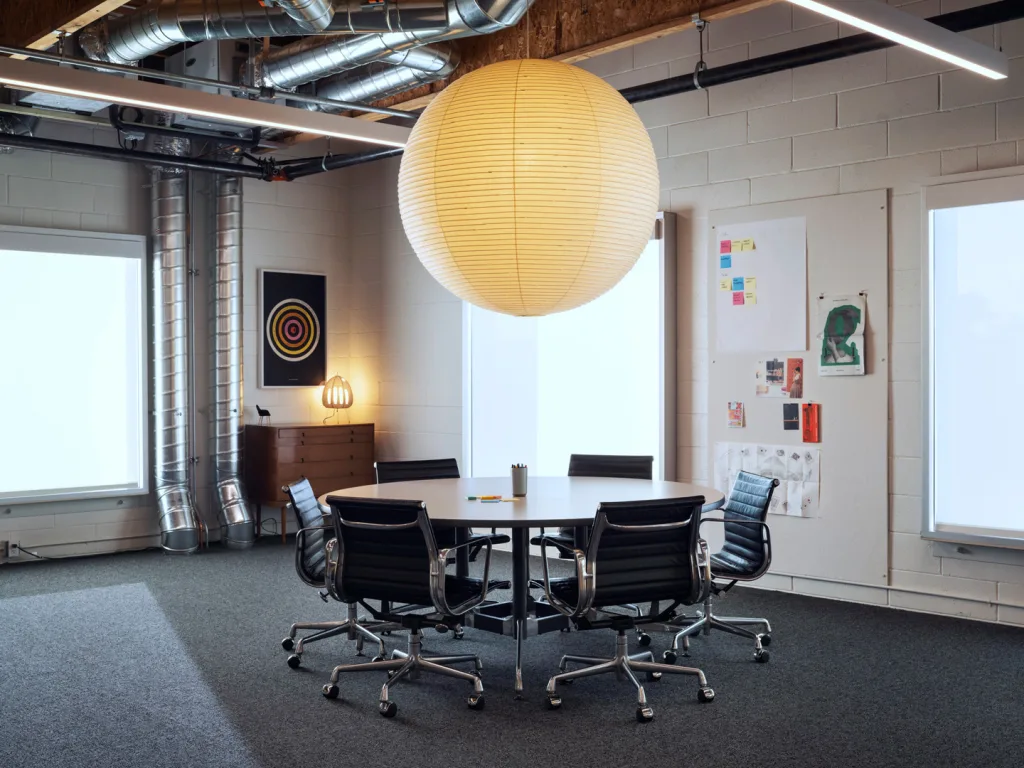
Upstairs, the rest of the office space draws heavily on Eames furniture. The space was designed collaboratively by the staff’s design-centric minds, including Grawe, who spent nearly a decade working at Herman Miller and was previously editor-in-chief of Dwell magazine. “One thing that was really fun about this project was the mixing of vintage and archival pieces that are not in current production with both new Eames pieces that are in production and then other complementary furnishings that serve the needs of today,” he says.
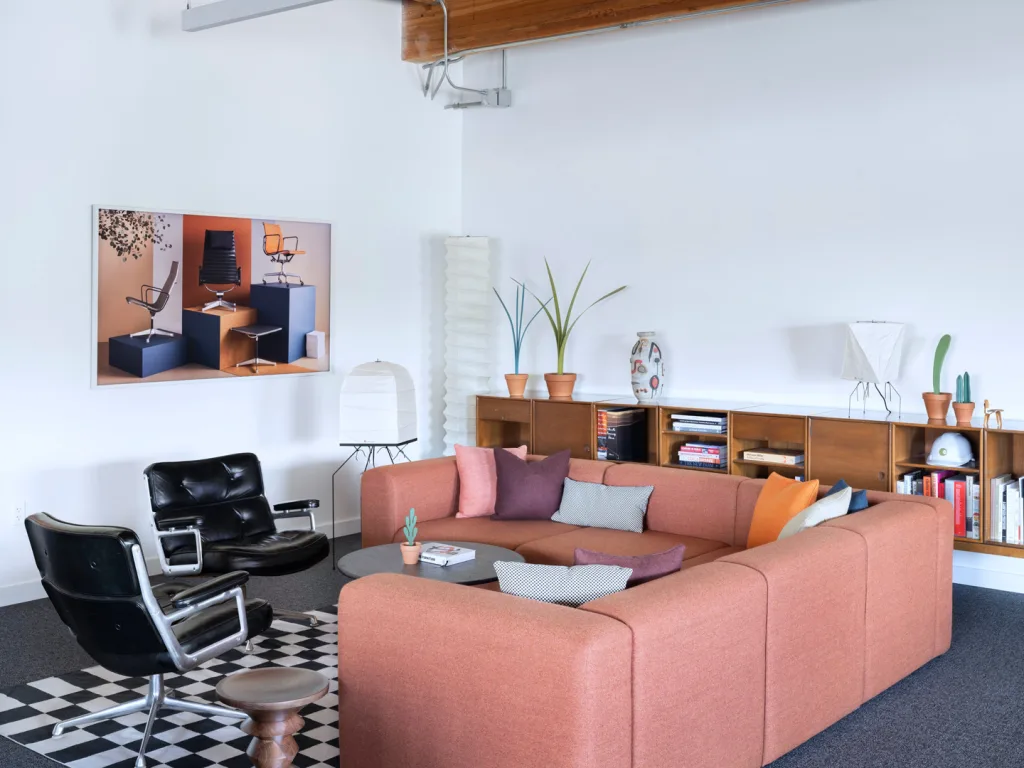
That means Eames designs do not have exclusive reign, and the team had to search for compatible solutions that would fit in. “Well, the Eameses didn’t design a table with power that could sit 10 people, so let’s figure out what we use for that,” Grawe says. A contemporary approach extends to the art on display in the offices upstairs, much of which is pulled from contributors to the institute’s publication, Kazam.
The office and collections space offer a unified location for exploring and expanding the Eames legacy. Inside, it’s a testament to the timeless designs of many of the pair’s iconic furnishings and decorations. Outside, it’s a reminder that you never know what a building might be hiding.
ABOUT THE AUTHOR
Fast Company
(12)

